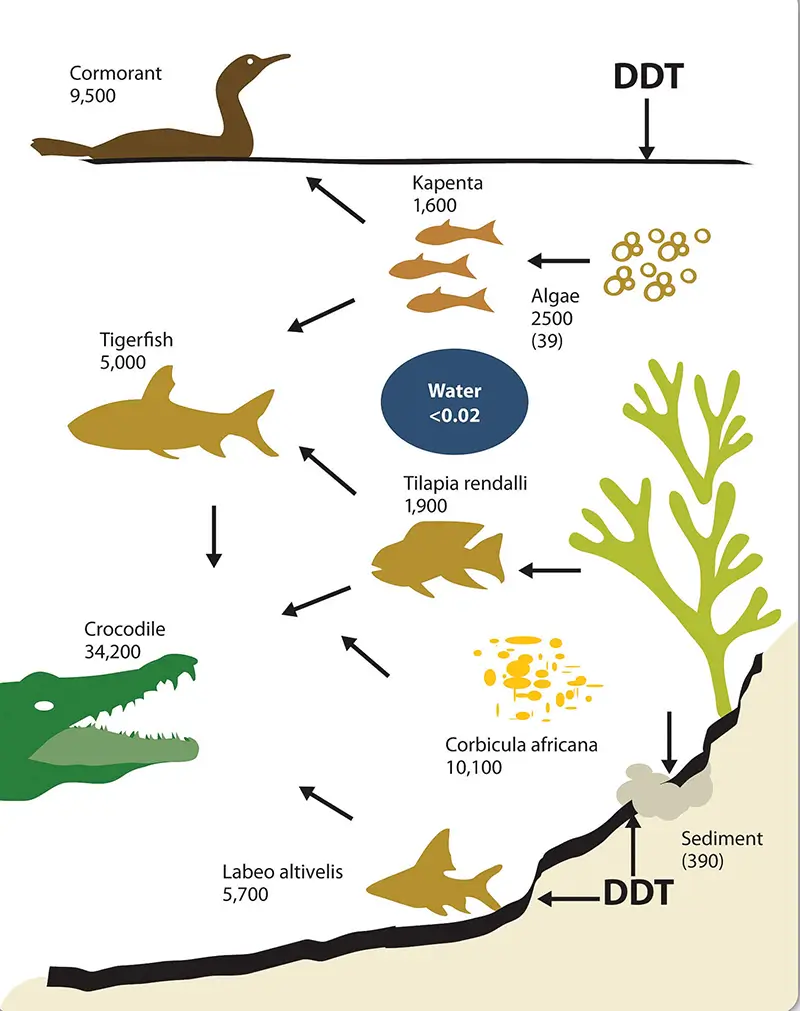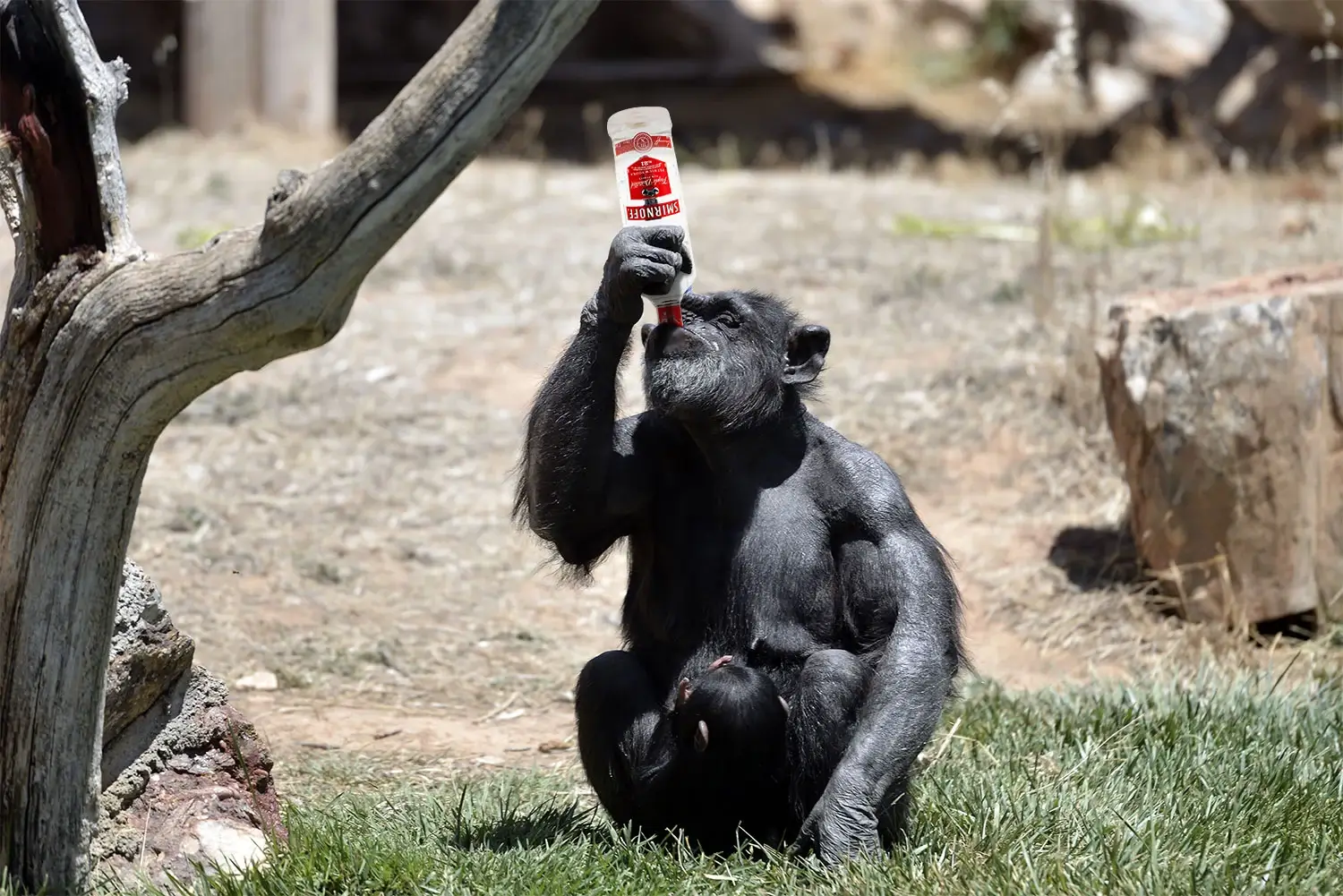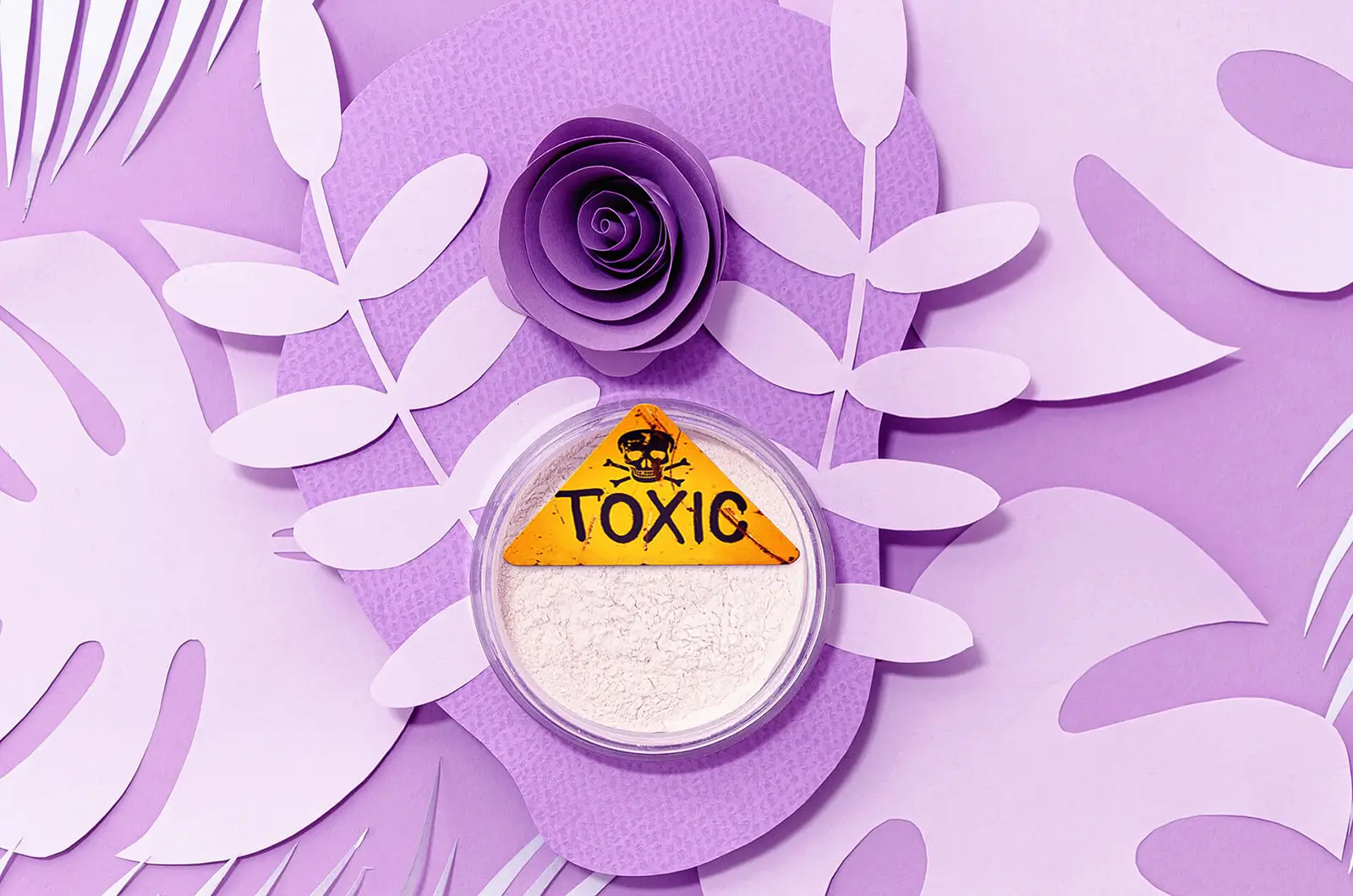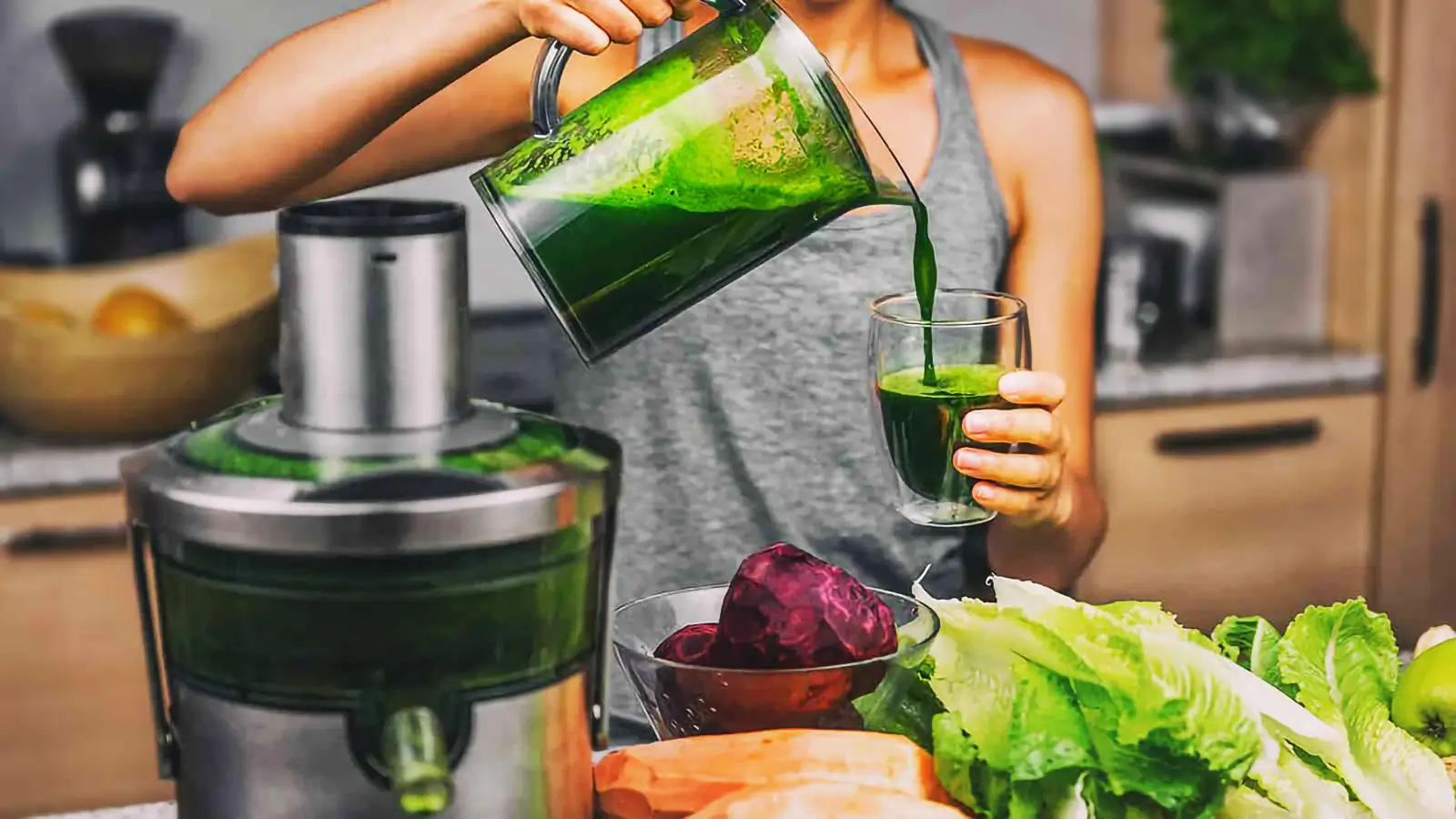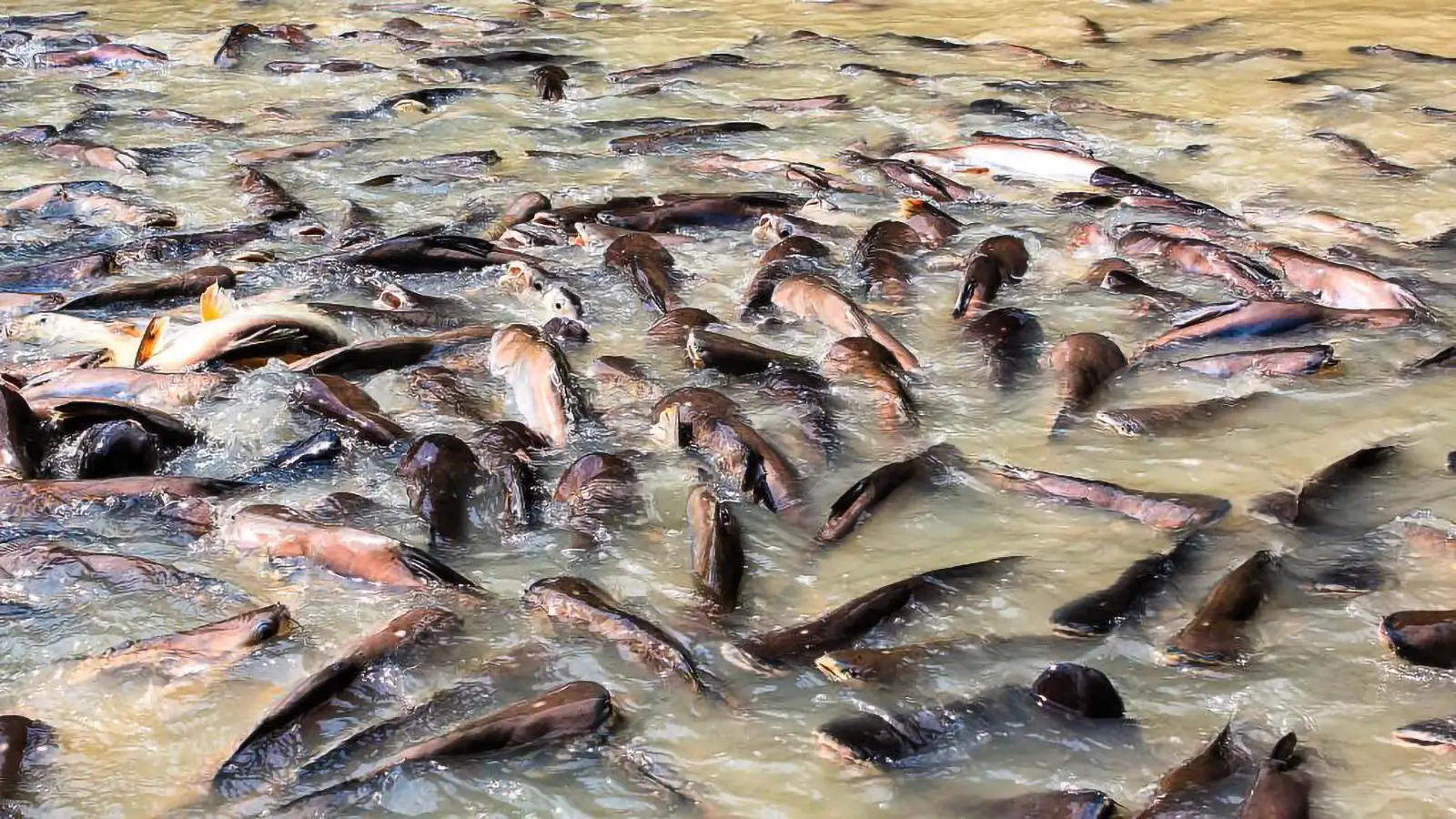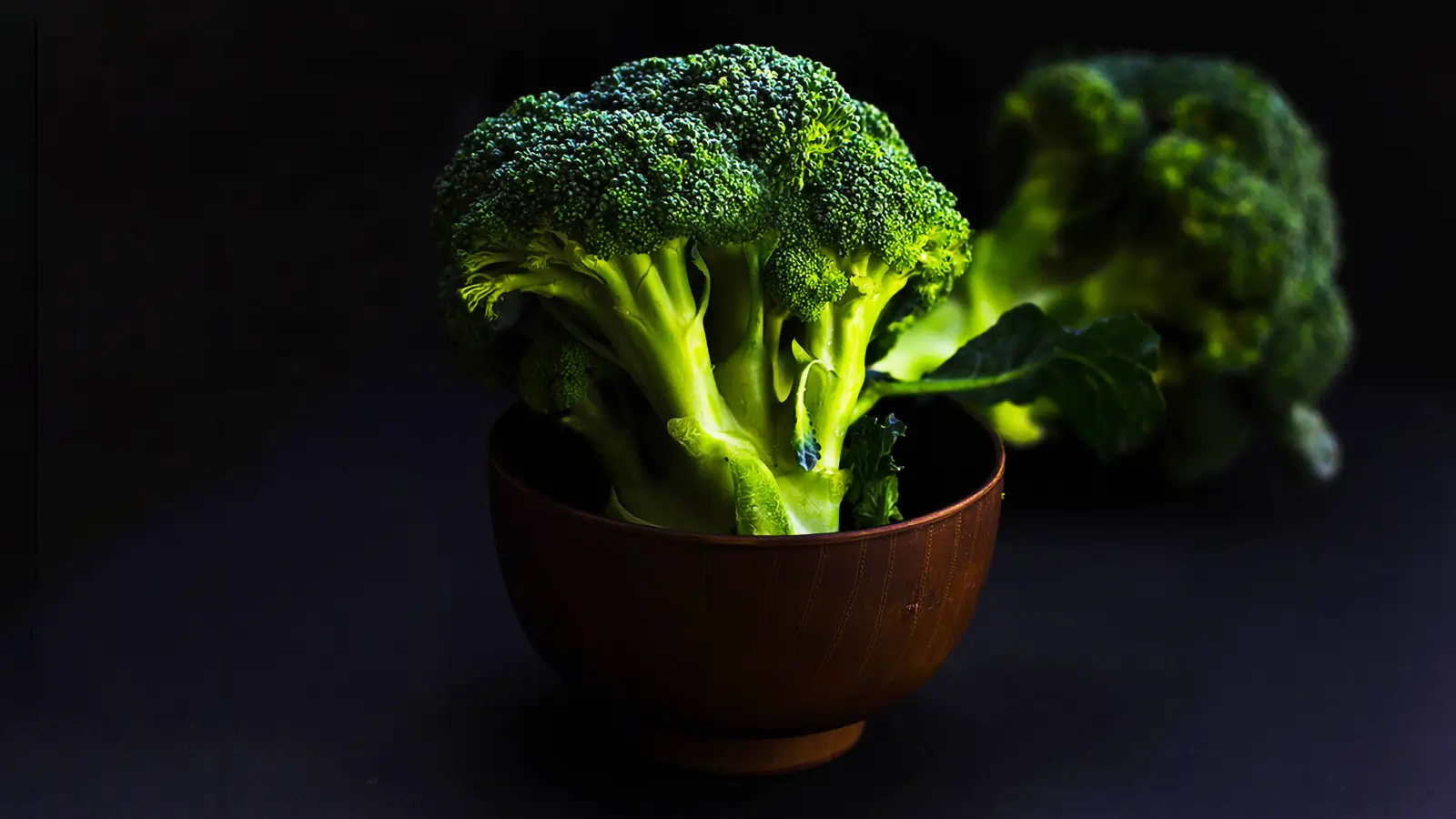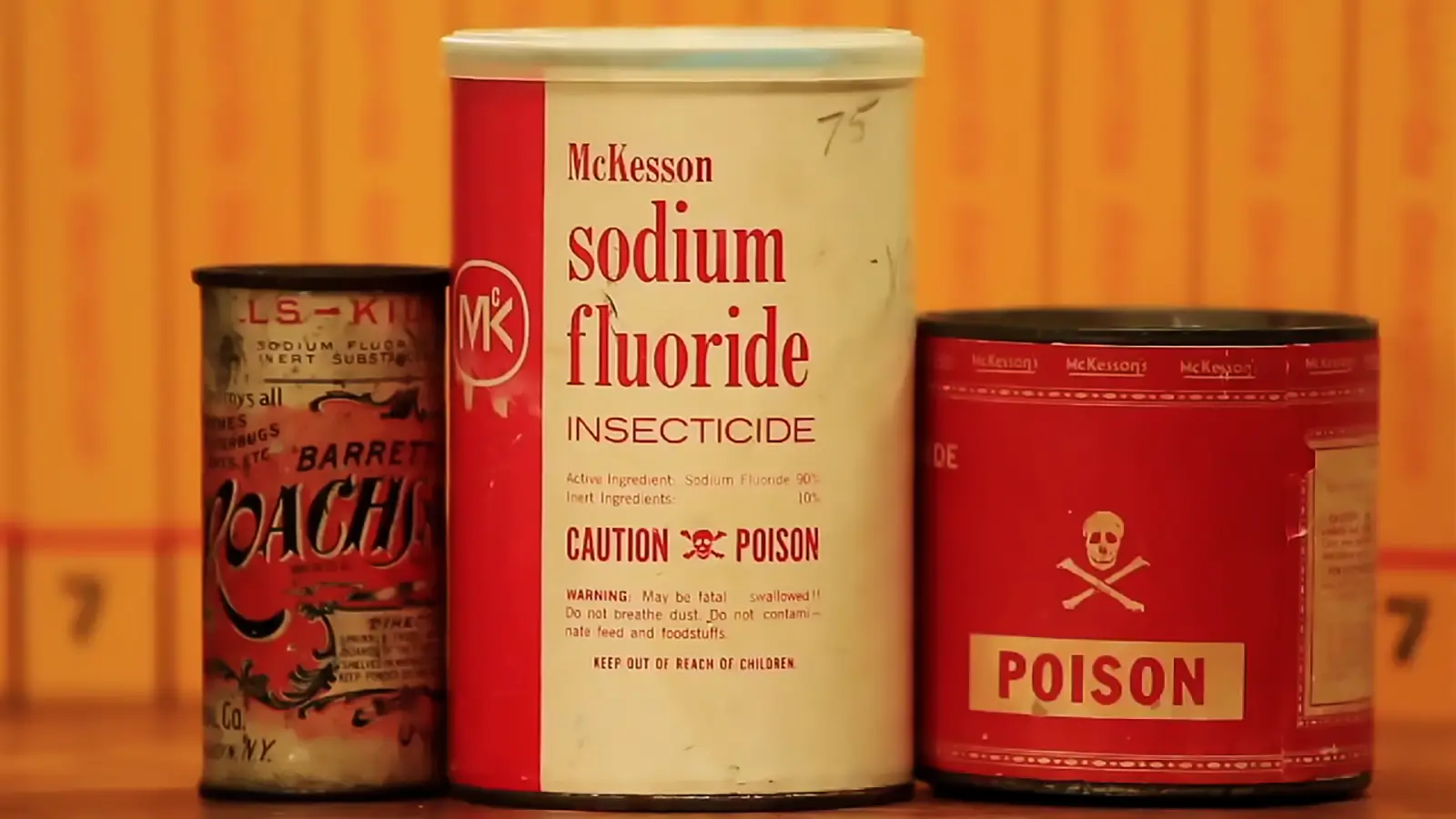Detoxification and pregnancy toxicity exposure risk- The vegan argument
Pregnancy toxicity exposure level for an average woman is tested to be around 35 different chemicals including both banned and contemporary contaminants.
Milos Pokimica
Written By: Milos Pokimica
Medically Reviewed by: Dr. Xiùying Wáng, M.D.
Updated May 28, 2023There are thousands of different man-made chemical toxins in the environment and this can be a risk for fetal pregnancy toxicity. Most people are familiar with pesticides because they are used regularly in millions of tons annually. Then they are different industrial chemical pollutants, heavy metals, and other man-made pollution. There are even levels of prescribed drugs in wild fish. Most of the drugs we take are extracted in urine and can end up in waterways. Drugs that are stable like Prozac, for example, end up polluting waterways. Chemicals we do not drink but use for cosmetics like hair dyes or creams with hundreds of different chemicals like paraben for example also end up in waterways. Several studies had confirmed the presence of trace concentrations of PPCPs (Pharmaceuticals and Personal Care Products) in all types of water. Surface water and finished drinking water have it. Do they pose any health risk is largely unknown.
The concentrations are low, but there is concern that some of them can bioaccumulate. The point of this argument is that even the small pills that people take from time to time like ibuprofen can be detected in the environment. Dumping the tens of thousands of tons of chemicals produced in factories every year that do not degrade and stay in the environment for eternity, usually is not a good thing. If we count all of the industries around 700 new chemicals are introduced into the US market. That is just the US without any other country in the world. In the US alone more than 84,000 chemicals are used in processing, manufacturing, and other types of industries. This does not count all the drugs from the pharmacy.
These chemicals are everywhere, but the scary fact is that there is no safety data on most of them. They are in the water, air, soil, our food supply, and everyday products. Some groups of people also have higher exposure to these toxic environmental chemicals than others. For instance, workers who work on farms have higher exposures to chemicals used on the crops.
One especially susceptible group is pregnant women. Some pollutants can have a negative impact on fetal development. The amount of pollution in the environment will affect the fetus much more than the mother.
During pregnancy, the baby’s nervous system and all of the other organs are developing rapidly and the baby does not have an immune system and developed detoxifying mechanisms and can be more sensitive to the toxic effects of pesticides. Exposure to these substances directly causes birth defects, stillbirth, and spontaneous abortion.
We now know that pregnant women exposed to DDT have a significantly increased risk of premature birth. They are also at risk if they go full-term to have low birth weight babies. Studies in mice have found that DDE (DDT metabolite) blocks the binding of the hormone progesterone to its receptors. Home abortion pills like Misoprostol work by the same mechanism by blocking the binding of progesterone. It is the same mechanism of action with no difference. In the environment, DDT in some species that are more sensitive to it can cause the extinction of the entire species. For instance, DDT is linked with severe declines in bald eagle populations due to its effect on the thinning of eggshells. After the DDT ban was in place, it took decades but bald eagle numbers had returned to optimal levels, and they are not endangered species anymore. Because of its toxic effects, DDT is banned in the developed world, but in Africa, it is still used. It is cheap and can combat malaria which are two conditions that force the use of DDT to this day. But what about thousands of other toxic man-made chemicals and heavy metals and other forms of environmental pollution?
The logical step is to minimize exposure. One of the ways is going low on a food chain, and the other is eating organic. That is it. The only thing we can do. Go natural. Natural meaning natural human diet. Diet low on the food chain. If not, we will get exposed to neurotoxic substances like mercury and lead and endocrine disruptive substances like POPs (persistent organic pollutants) and all of the carcinogens and pro-inflammatory compounds with systematic and chronic effects on our health.
When they tested the U.S. pregnant woman in a study done in 2011, they found that almost all of the pregnant women had toxicity from multiple chemicals and with some that were banned since the 1970s. Every couple of years CDC measures the number of environmental pollutants in the bodies of Americans across the country. In this study (Woodruff et al., 2011) they analyzed biomonitoring data from the National Health and Nutritional Examination Survey (NHANES). Analyzing data for 163 chemicals they found that certain pesticides, toxic solvents, endocrine disruptors, carcinogens, and heavy metals were detected in 99–100% of pregnant women.
On average pregnant woman is polluted with around 35 different chemicals including both banned and contemporary contaminants. Chemical cocktail levels of many of these chemicals were comparable to the levels incorporated in investigations and studies dealing with pregnancy and in levels that can have fatal adverse effects. Pregnant women were exposed to multiple chemical cocktails at one time, many of which can affect the same adverse outcomes later in life. Having one or two chemicals is bad enough but having 35 of them all the time and having hundreds of them running through your body from time to time is toxic overload with synergistic effects that will have a significant impact on your health from pregnancy toxicity to chronic inflammation to full-blown disease.
If you want to become pregnant and decide to detoxify the short answer is that you cannot. Detoxification depends on the individual half-life of these pollutants with the presumption that you would never have any pollution in your life again. Which is not possible no matter what you do. In this study (Arguin et al., 2010) aim was to design the diet to prevent or reduce the body load of organochlorines (OC) in humans. Organochlorines are chemical compounds that were widely used after World War 2 as insecticides in the industry but were banned in the 1970s. They are resistant to degradation, so they still continue to be present in most of the food chains, and because they are fat-soluble, they accumulate in the adipose tissue of organisms. Study 1 compared plasma OC concentrations between vegans and omnivores. Study 2 looked into dietary fat substitute olestra. They wanted to test if olestra could prevent the increase in OC concentrations that happen during dieting. What they observed was that OC plasma concentrations were significantly lower in vegans.
In conclusion, there was a trend toward significantly lesser contamination in vegans than omnivores, and olestra did not prevent plasma hyper-concentration of the OC during ongoing weight loss. What surprised the researchers is that vegans had as much as they did because theoretically they should not be exposed to a high degree of these pesticides. Vegans tend to have around 30 to 40 percent lower plasma concentrations. The conclusion was that vegans may be exposed to mother milk at the time of lactation and that becoming vegan or vegetarian is often a decision that is made in adulthood. Thus the omnivore diet during childhood and puberty results in contamination that is still detectable in adults. In addition, vegans may occasionally depart from their diet and eat animal products.
Detoxification is a slow process and cannot be done on a weekend of detox diet cleansing or fasting. Detox starts with clean food. If we chose to go vegan, we would still get exposed because we live in our environment, not in a bubble. Most of the plant food has some pollution in them. Some have more pesticides or heavy metals, or other types of toxins some have less, and even organic food is not truly organic because it will pick up some of the toxins from the environment. We could not have clean food in a filthy environment only thing we could hope for is cleaner food, and that cleaner food is much more expensive, so if we look realistically, we will get exposed no matter what we do.
References:
- Woodruff, T. J., Zota, A. R., & Schwartz, J. M. (2011). Environmental chemicals in pregnant women in the United States: NHANES 2003-2004. Environmental health perspectives, 119(6), 878–885. https://doi.org/10.1289/ehp.1002727
- Arguin, H., Sánchez, M., Bray, G. A., Lovejoy, J. C., Peters, J. C., Jandacek, R. J., Chaput, J. P., & Tremblay, A. (2010). Impact of adopting a vegan diet or an olestra supplementation on plasma organochlorine concentrations: results from two pilot studies. The British journal of nutrition, 103(10), 1433–1441. https://doi.org/10.1017/S000711450999331X
Related Posts
Do you have any questions about nutrition and health?
I would love to hear from you and answer them in my next post. I appreciate your input and opinion and I look forward to hearing from you soon. I also invite you to follow us on Facebook, Instagram, and Pinterest for more diet, nutrition, and health content. You can leave a comment there and connect with other health enthusiasts, share your tips and experiences, and get support and encouragement from our team and community.
I hope that this post was informative and enjoyable for you and that you are prepared to apply the insights you learned. If you found this post helpful, please share it with your friends and family who might also benefit from it. You never know who might need some guidance and support on their health journey.
– You Might Also Like –

Learn About Nutrition
Milos Pokimica is a doctor of natural medicine, clinical nutritionist, medical health and nutrition writer, and nutritional science advisor. Author of the book series Go Vegan? Review of Science, he also operates the natural health website GoVeganWay.com
Medical Disclaimer
GoVeganWay.com brings you reviews of the latest nutrition and health-related research. The information provided represents the personal opinion of the author and is not intended nor implied to be a substitute for professional medical advice, diagnosis, or treatment. The information provided is for informational purposes only and is not intended to serve as a substitute for the consultation, diagnosis, and/or medical treatment of a qualified physician or healthcare provider.NEVER DISREGARD PROFESSIONAL MEDICAL ADVICE OR DELAY SEEKING MEDICAL TREATMENT BECAUSE OF SOMETHING YOU HAVE READ ON OR ACCESSED THROUGH GoVeganWay.com
NEVER APPLY ANY LIFESTYLE CHANGES OR ANY CHANGES AT ALL AS A CONSEQUENCE OF SOMETHING YOU HAVE READ IN GoVeganWay.com BEFORE CONSULTING LICENCED MEDICAL PRACTITIONER.
In the event of a medical emergency, call a doctor or 911 immediately. GoVeganWay.com does not recommend or endorse any specific groups, organizations, tests, physicians, products, procedures, opinions, or other information that may be mentioned inside.
Editor Picks –
Milos Pokimica is a doctor of natural medicine, clinical nutritionist, medical health and nutrition writer, and nutritional science advisor. Author of the book series Go Vegan? Review of Science, he also operates the natural health website GoVeganWay.com
Latest Articles –
Plant Based News
-
Where Do Vegans Get Their Protein? The Ultimate 2025 Response
on June 29, 2025
-
Saffron Green Bean Rice
on June 29, 2025
-
Tomato Choka Salad With Chickpea Tofu
on June 29, 2025
-
How To Make This ‘Always A Winner’ Vegan Sandwich
on June 29, 2025
-
5-Ingredient Coconut And Squash Traybake
on June 29, 2025
-
Lidl Launches Round BN-Style Vegan Biscuits
on June 28, 2025
-
Vegan Mushroom Calzone
on June 28, 2025
Top Health News — ScienceDaily
- A tiny implant just helped paralyzed rats walk again—is human recovery next?on June 28, 2025
A groundbreaking study from the University of Auckland and Chalmers University of Technology is offering new hope for spinal cord injury patients. Researchers have developed an ultra-thin implant that delivers gentle electric currents directly to the injured spinal cord. This device mimics natural developmental signals to stimulate nerve healing, and in animal trials, it restored movement and touch sensation in rats—without causing inflammation or damage.
- Scientists turn beer yeast into mini factories for smart drugson June 28, 2025
A team of researchers has turned ordinary yeast into tiny, glowing drug factories, creating and testing billions of peptide-based compounds in record time. This green-tech breakthrough could fast-track safer, more precise medicines and reshape the future of pharma.
- Candy colors, THC inside: How cannabis edibles are tricking teen brainson June 28, 2025
Teens are being misled by cannabis edibles dressed up like health foods. Bright colors, fruit imagery, and words like vegan make these products look fun, natural, and safe even when they re not. A WSU study warns that this could increase the risk of underage use and urges new packaging rules based on what actually appeals to teens.
- Why asthma often comes back—even with powerful drugson June 27, 2025
Biological drugs have been a game-changer for people with severe asthma, helping them breathe easier and live more comfortably. But researchers at Karolinska Institutet have uncovered a surprising twist: while these treatments ease symptoms, they may not fully eliminate the immune cells that drive inflammation. In fact, some of these cells actually increase during treatment, suggesting the medication is managing symptoms without targeting the root cause. This could explain why asthma often […]
- Parkinson’s may begin decades earlier — and your immune system might know firston June 27, 2025
Misbehaving T cells light up long before Parkinson’s symptoms show, zeroing in on vulnerable brain proteins. Their early surge could double as an alarm bell and a target for stop-it-early treatments.
- AI sees what doctors miss: Fatty liver disease hidden in chest x-rayson June 27, 2025
Researchers in Japan created an AI that can detect fatty liver disease from ordinary chest X-rays—an unexpected and low-cost method that could transform early diagnosis. The model proved highly accurate and may offer a fast, affordable way to flag this silent but serious condition.
- Acid-busting diet triggers 13-pound weight loss in just 16 weekson June 26, 2025
Swap steaks for spinach and you might watch the scale plummet. In a 16-week crossover study, overweight adults who ditched animal products for a low-fat vegan menu saw their bodies become less acidic and dropped an average of 13 pounds—while the Mediterranean diet left weight unchanged. Researchers link the shift to lower “dietary acid load,” a hidden inflammation trigger driven by meat, eggs, and cheese.
PubMed, #vegan-diet –
- Micronutrient intake and nutritional status in 16-to-24-year-olds adhering to vegan, lacto-ovo-vegetarian, pescatarian or omnivorous diets in Swedenon June 26, 2025
CONCLUSION: Youth, regardless of dietary practice, need support to ensure adequate micronutrient intakes, particularly for vitamin D and selenium. Further research is required to evaluate iodine nutrition in Swedish youth.
- Dietary Patterns and Sustainable Lifestyles: A Multicenter Study from Latin America and Spainon June 26, 2025
Food systems interact through multiple dimensions including food security, nutrition, and planetary health. This study aims to associate different dietary patterns with sustainable lifestyles in Latin America and Spain. This was an observational, analytical, multicenter, cross-sectional survey study, with a total of 6412 participants. A self-administered questionnaire was developed in an online format in the Google Docs interface. The questionnaire was divided into sections: (1) […]
- Integrating comparative genomics and risk classification by assessing virulence, antimicrobial resistance, and plasmid spread in microbial communities with gSpreadCompon June 26, 2025
CONCLUSIONS: The gSpreadComp workflow aims to facilitate hypothesis generation for targeted experimental validations by the identification of concerning resistant hotspots in complex microbial datasets. Our study raises attention to a more thorough study of the critical role of diet in microbial community dynamics and the spread of AMR. This research underscores the importance of integrating genomic data into public health strategies to combat AMR. The gSpreadComp workflow is available at…
- Validation and adaptation of a Turkish version of the dietarian identity questionnaireon June 25, 2025
Dietarian identity reflects an individual’s cognitive, emotional, and behavioral orientation toward the consumption or avoidance of animal-based foods, including red meat, poultry, fish, eggs, and dairy. This study aimed to adapt and validate the Dietarian Identity Questionnaire (DIQ) for Turkish-speaking populations by establishing its cultural and linguistic suitability and examining dietarian identity profiles among different dietary patterns. The DIQ was adapted into Turkish and […]
- Planting Rights and Feeding Freedom: Navigating the Right to a Vegan Diet in Hospitals and Prisonson June 20, 2025
The legal recognition of veganism highlights the evolving landscape of dietary choices and their status under human rights law. This paper examines the legal status of vegan diets under the European Convention on Human Rights (ECHR), focusing on public institutions such as prisons and hospitals. By analyzing the first relevant cases before the European Court of Human Rights, it explores the protection of vegan diets under Articles 9 (freedom of thought, conscience, and religion) and 14…
Random Posts –
Featured Posts –

Latest from PubMed, #plant-based diet –
- Adherence to Mediterranean Diet and Implications for Cardiovascular Risk Preventionby Giulia Frank on June 27, 2025
Background/Objectives:Arterial hypertension, increased carotid intima-media thickness (cIMT), and arterial stiffness (AS) are recognized predictors of cardiovascular disease (CVD). Emerging evidence suggests that vascular remodeling may precede the full development of hypertension. Furthermore, body mass index (BMI), fat mass percentage (FM%), and visceral adipose tissue (VAT), are significant risk factors for cardiovascular events. Conversely, adherence to the Mediterranean diet is […]
- Fermented Fruits, Vegetables, and Legumes in Metabolic Syndrome: From Traditional Use to Functional Foods and Medical Applicationsby Karolina Bernacka on June 27, 2025
Fermentation has been used for centuries to preserve food and to obtain products with new, attractive sensory characteristics. Fermented products are a source of dietary fiber, vitamins, bioactive compounds, and probiotic bacteria with health-promoting properties. This review provides a comprehensive overview of the effects of fermented fruits, vegetables, and legumes on metabolic disturbances characterizing metabolic syndrome (MetS). Furthermore, the chemical composition, microbial […]
- Dos and Don’ts in Kidney Nutrition: Practical Considerations of a Panel of Experts on Protein Restriction and Plant-Based Diets for Patients Living with Chronic Kidney Diseaseby Massimo Torreggiani on June 27, 2025
Dietary management is a pillar of chronic kidney disease (CKD) treatment. While some rules are the same as dietary prescriptions for the general population and those suffering from other chronic diseases (energy intake, salt intake, avoidance of ultra-processed food and limited intake of animal fats), in non-dialysis-dependent patients living with CKD, the specific focus is on protein intake. Low-protein diets (LPDs) and supplemented very low protein diets (sVLPDs) have been successfully…
- Effects of Pork Protein Ingestion Prior to and Following Performing the Army Combat Fitness Test on Markers of Catabolism, Inflammation, and Recoveryby Drew E Gonzalez on June 27, 2025
Tactical athletes and military personnel engaged in intense exercise need to consume enough quality protein in their diet to maintain protein balance and promote recovery. Plant-based protein sources contain fewer essential amino acids (EAAs), while pork loin contains a higher concentration of EAAs and creatine than most other animal protein sources. This study aimed to determine whether the ingestion of plant-based or pork-based military-style meals ready-to-eat (MREs) affects recovery from […]
- Mediterranean Diet, Obesity-Related Metabolic Cardiovascular Disorders, and Environmental Sustainability: A Systematic Reviewby Sergio Rodríguez Núñez on June 27, 2025
INTRODUCTION: This article aims to provide an updated overview of the scientific knowledge regarding the interplay between the Mediterranean diet (MedD), sustainability, and cardiovascular and metabolic health.
- Employing Nutrition to Delay Aging: A Plant-Based Telomere-Friendly Dietary Revolutionby Joanna Polom on June 27, 2025
Telomere attrition is a hallmark of cellular aging, influenced by oxidative stress, chronic inflammation, and metabolic dysregulation. Emerging evidence suggests that dietary patterns rich in plant-based, minimally processed foods may influence telomere dynamics, potentially extending healthspan. This narrative review synthesizes current literature on the molecular mechanisms by which specific nutrients-such as antioxidants, polyphenols, omega-3 fatty acids, and methyl donors-affect telomere…



